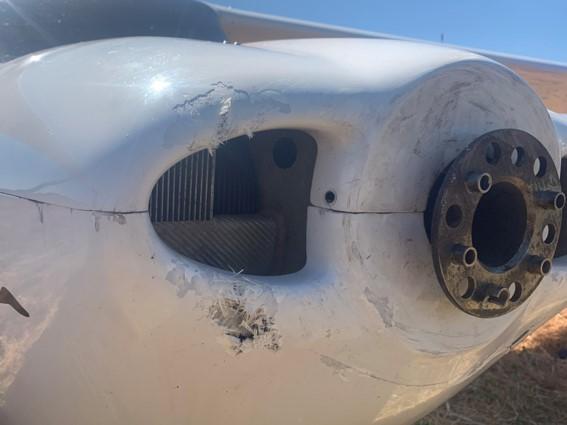


A final investigation report dated 14th November 2022 by Australian Transport Safety Bureau (ATSB) indicates — the propeller of a Jabiru aircraft separated in-flight due to fractured propeller bolts likely due to a loss of bolt tension.
A student pilot had departed on a training area solo flight in the Jabiru J170-C aircraft from Muchea Greenside airfield, north of Perth, on 22 December 2021.
On return to the airfield, during the downwind leg of the circuit, the pilot commenced configuring the aircraft for landing when a vibration from the engine was felt. The engine gauges read as normal and the vibration reduced with throttle reduction.
Shortly after, while on final approach, the pilot observed emus crossing the runway around the normal touchdown point and conducted a go-around. While on climb at around 800 feet, there was a loud ‘bang’ and the pilot observed that the propeller had separated from the aircraft.
The pilot elected to land ahead and conducted an uneventful forced landing in a paddock, approximately 2.5 km from the end of the runway. The aircraft suffered minor damage during the landing, and the pilot was uninjured.
“The ATSB’s investigation found that the propeller separated as a result of fracture of the propeller bolts that was likely related to a loss of bolt tension,” said ATSB Director Transport Safety Dr Stuart Godley.
“However, as the propeller was not able to be found, the mechanism for the loss of bolt tension was not determined.”
The investigation also noted that the student pilot’s actions were positively influenced by having recently undertaken several hours’ worth of flight emergency training, contributing to the safe outcome.
“When faced with an in-flight emergency, emergency training practice and recurrence will increase the likelihood of pilots achieving a safe outcome,” Dr Godley said.
The student pilot had approximately 70 hours flying experience, all of which was on the Jabiru J170. The pilot commented that the training positively influenced their actions, helped them remain calm and contributed to the safe outcome.
The Jabiru J170-C is a 2-seat, light sport aircraft with a high-wing and fixed undercarriage. The subject aircraft was manufactured and first registered in 2010. It was powered by a Jabiru 2200B 4-cylinder engine, with a Jabiru C000242-series, 2-blade, fixed-pitch propeller, constructed of hoop pine, sheathed in fibreglass.
The separated propeller assembly could not be recovered. As a result, component examination by the ATSB was limited to the propeller flange and 5 (of 6) remaining guide bushes.

The operator indicated that the propeller bolts were installed in the correct orientation, and as such, there was insufficient clearance between the propeller flange and nose cowl for the bolts to back out of the flange.
Therefore , the absence of propeller bolts retained in the flange indicted that the propeller ultimately separated from the aircraft due to fracture of the bolts.
Without the bolts available for examination, the reason for the propeller bolt fractures was not conclusively determined. However, the evidence of movement and fretting on the flange was consistent with a loss of clamping force or low bolt tension.
Dr Godley noted that the ATSB did not typically investigate incidents and accidents involving recreational category aircraft. However, as Australia is the state of design and state of manufacture for the Jabiru aircraft, and the same aircraft model are registered with CASA and is also operated internationally, the ATSB conducted the investigation to determine if there were broader lessons for the aircraft type.
Source : Australian Transport Safety Bureau (ATSB)
